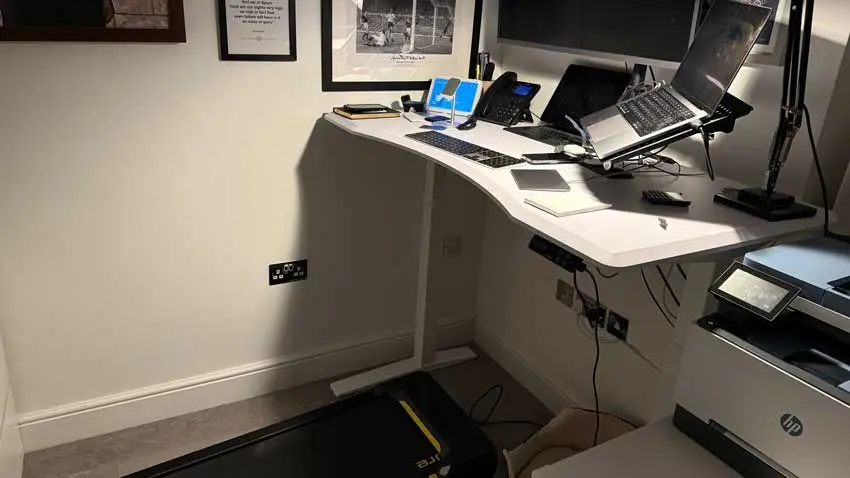After a decade of working from home, the sedentary lifestyle began to take a toll. The decision to switch to a standing desk and walking treadmill was not taken lightly but stemmed from an increasing awareness of the physical impacts of prolonged sitting.
The transition came with initial scepticism. However, the remarkable improvements in productivity, physical health, and overall workday satisfaction have undeniably justified the upgrade.
Over the years, the aches and discomforts from continuous sitting became impossible to ignore. These physical signs underscored the need for a significant change in the home office setup.
Standing intermittently during work hours facilitated better posture and reduced back pain. It fostered a more dynamic and engaging work environment.
The use of the treadmill at a moderate pace of around 6mph helped keep the blood flowing and combated the lethargy associated with prolonged periods of inactivity.
The standing desk and walking treadmill combination allowed for workflow flexibility, making it easier to stay active without compromising work efficiency.
These health benefits extended beyond work hours, positively influencing general physical activity levels and well-being.
Standing and gentle walking provided a refreshing change, making the workday feel less static and more dynamic.
Reflecting on the transition, the initial reluctance seems almost humorous in hindsight. The standing desk and walking treadmill have become essential components of a healthier, more productive work-from-home setup. The positive changes experienced have been transformative.
Upgrading to a standing desk and walking treadmill has proven to be a wise decision. The improvements in health, productivity, and daily routines affirm that incorporating movement into a work-from-home setup is advantageous.
Adapting to this evolved workspace signifies embracing change for the better, ensuring long-term benefits for both physical health and professional performance.

